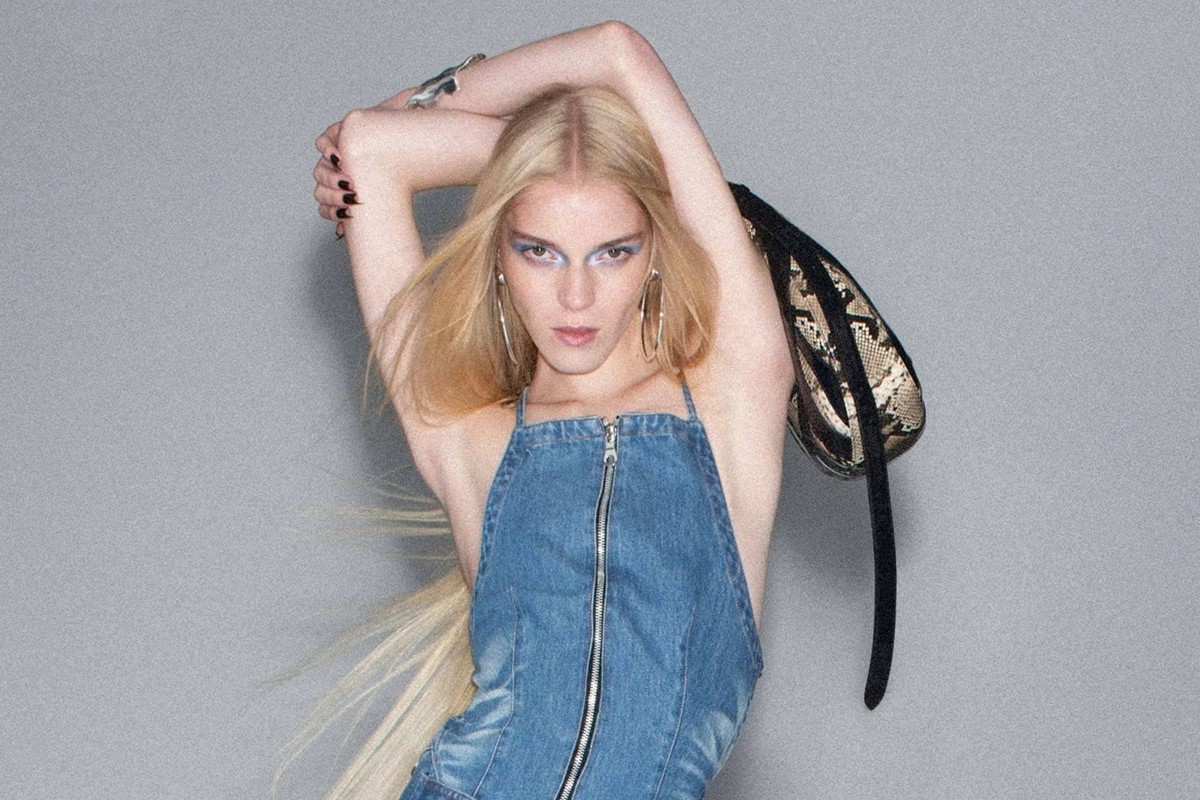Fashion
Should archive fashion stay in the archive? Two writers go head-to-head

Over the past few years, archive fashion has made an unmistakable return to red carpets around the world. More and more, celebs and their stylists are looking to the past for their major fashion moments, from the Kardashians to Zendaya, Cardi B and Bella Hadid, all coming to a head at this year’s Met Gala and its accompanying exhibition Sleeping Beauties: Reawakening Fashion. This weekend, at the Academy Museum Gala in Los Angeles – which is being dubbed by some as the new Met Gala – we once again saw a heady influx of archival looks. From sisters Kylie Jenner and Kim Kardashian both wearing 1998 archive Mugler, to Kaia Gerber in Alexander McQueen’s AW97 Givenchy. It’s a choice praised by some and loathed by others – should archive pieces stay in their dust bags for all eternity? Below, two fashion writers go head-to-head on the question that has our industry in a chokehold.
Fashion is a deeply nostalgic industry. Today’s designers frequently visit their own archives for inspiration – just look at this season’s Prada, Valentino or Gucci collections, which included several catwalk motifs taken from the brands’ pasts, meanwhile fashion devotees are constantly harking back to the untouchable greatness of the 80s and 90s. John Galliano’s Dior, Tom Ford’s Gucci, McQueen, Jean Paul Gaultier and Mugler are all names that immediately spring to mind when discussing fashion’s golden years. For many, it’s hard not to draw comparisons to the joy, glamour and creativity of what once was.
It’s no wonder then that stylists have been pulling from collections widely regarded as some of the best in fashion history. Yet, somehow, seeing archive looks through the crisp digital lens of flash photography, backdropped by a red carpet, can quickly strip away the magic. The quote “Don’t cry because it’s over. Smile because it happened” comes to mind. Are we ruining the dreamy allure of fashion history by digging up the past and putting it on the backs of today’s most famous stars? Perhaps we should allow iconic, historic, catwalk moments to remain in our memories as exactly that. We should be grateful that they happened, rather than resurrecting them so they can be taken out of the context of their show and rather, to promote whichever celeb’s latest action movie.
There is also some grey area here. Occasionally it works. Take the McQueen Givenchy 1997 dress that Gerber wore to the Academy Museum Gala this weekend, for example. The gown is a gothic take on Audrey Hepburn’s My Fair Lady, and of all of McQueen’s creations is one far lesser known. Gerber paid tribute to Hollywood’s past with a subtle, elegant look that resurfaced an often overlooked corner of couture’s past.
Then there’s the not-so-subtle moments, like when Zendaya wore the AW95 Mugler “Gynoid” suit to the London premiere of Dune: Part Two earlier this year. Respect is due for the bold choice, and though Zendaya – alongside stylist Law Roach – consistently outdoes everyone else, the robot-inspired suit was taken from arguably Mugler’s most iconic collection of all: the brand’s 20th anniversary Cirque D’Hiver show, since dubbed “The Woodstock of Fashion”. An hour-long couture spectacle featuring a performance from James Brown, the show has gone down in history as one of the best catwalks of the 90s. To see the look reappear in Leicester Square, sandwiched between Timmy Chalamet and Austin Butler promoting a movie about giant worms, almost reduces it to a gimmick. And don’t even get me started on the memes that follow, or the physical damage that can be done to these precious artefacts – I’m looking at you Kim, who caused “permanent damage” to Marilyn Monroe’s dress after she wore it to the Met in 2022.
Ironically, by giving the look a second life, we’re draining it of the life it once had
Is it that stylists are struggling with fashion’s modern climate? Maybe if there was more creativity in today’s catwalk offerings then we wouldn’t be dipping into the vault so frequently. Or is it social media making us nostalgic for the 80s, 90s and 00s, with archival Instagram accounts prompting a desire for supermodels and their outfits in soft focus, grainy film?
We should be able to see these pieces on display at museums and in exhibitions. Where there is information to teach us about the origin and the context of the clothes. But when taken out of the vault and morphed into whatever context a powerful enough celebrity wishes, ironically, by giving the look a second life, we’re draining it of the life it once had. Not always, but for the most part, we should let archive fashion rest in peace. (Isobel Van Dyke)
Despite the fact I am arguing the fashion vault should remain open indefinitely, there is, in fact, a lot of evidence for the over-reliance of archive pulls. What was once a fun, IYKYK type thing is now the de facto red carpet mode, with stylists and celebs plundering the past to glean some much-needed fashion cred. Archive pulls have become less about fashion know-how and more about status – which dress is rarer, or which one is deeper a cut. It’s no surprise that a group of women like the Kardashian-Jenners partake so often, used as a tool to prop up their often insecure fashion status. While others, like Zendaya, are clearly true fashion heads, archival dressing is often a stand in for true style, an empty signifier that points towards a reverence for fashion history, but probably just means you have lots of cash at your disposal.
But! Having said all of that… I think we could all do with taking a few deep breaths. Despite some fashion people’s insistence that these clothes are divine symbols of a higher power, they are in fact dresses, and should be treated as such. As Lee McQueen famously said “it’s just clothes… it’s just there to be worn,” and I think we could all do with remembering those sentiments when talking about archive fashion. Dresses don’t have a built in expiry date, but should be worn and worn and worn again, as is their purpose. Designers from McQueen to Gianni Versace and John Galliano have made no bones about making clothing for hot-blooded women with vast interior lives, and not for the sole purpose of a museum exhibition. Of course, there’s exceptions to the rule, like one-of-a-kind dresses that need to be preserved, or clothing so fragile it can no longer be worn – but let’s leave that kind of restoration to The Costume Institute. Despite what you might believe, if Miley Cyrus wears an old Bob Mackie dress to the Grammys, the world will continue to spin on its axis (and that it did!)
Arguing against archive dressing also deifies the recent past as this kind of untouchable era, and fashion really doesn’t need any more self-mythologisation. If you love fashion and pore over old YouTube clips of shows from the 80s and 90s, then you should be happy to see those clothes continue their lives on real people, not confined to a grainy video. There’s also the added problem of defining that untouchable era – should there be a cut-off date of when you’re allowed to wear dresses from? 1986? 1992? 2004? Things are getting a bit too Fashion Police for my liking – judge the outfit on the outfit, not what collection it came from!
Speaking of judging, though, I think a main complaint people have against the archive is just that – that the outfits often don’t look good. Look… I get it. There’s nothing quite like seeing a standout piece from one of your favourite collections butchered on the red carpet. But the thing is, you can disagree with the styling, the alterations, you can think it’s just a bad pull in general – I definitely do in some cases – but to disagree with the actual practice of it is to deny those dresses their rediscovery. If you’re reading this, chances are you’re already interested in fashion, and already clued up on the designers being referenced. We might think archive fashion has been done to death, but there’s others out there who may not know who those designers are, and for them it prompts discovery of a terrain they might not have otherwise. In my opinion, a full lockdown is not the answer – maybe just a slight reassessment of our aims and objectives when it comes to archival dressing. Celebs and stylists need to refocus on what actually looks good on the wearer, not just on whether a piece is from an iconic collection – remember, an archive pull does not equal an automatic slay. Tread carefully. (Elliot Hoste)








